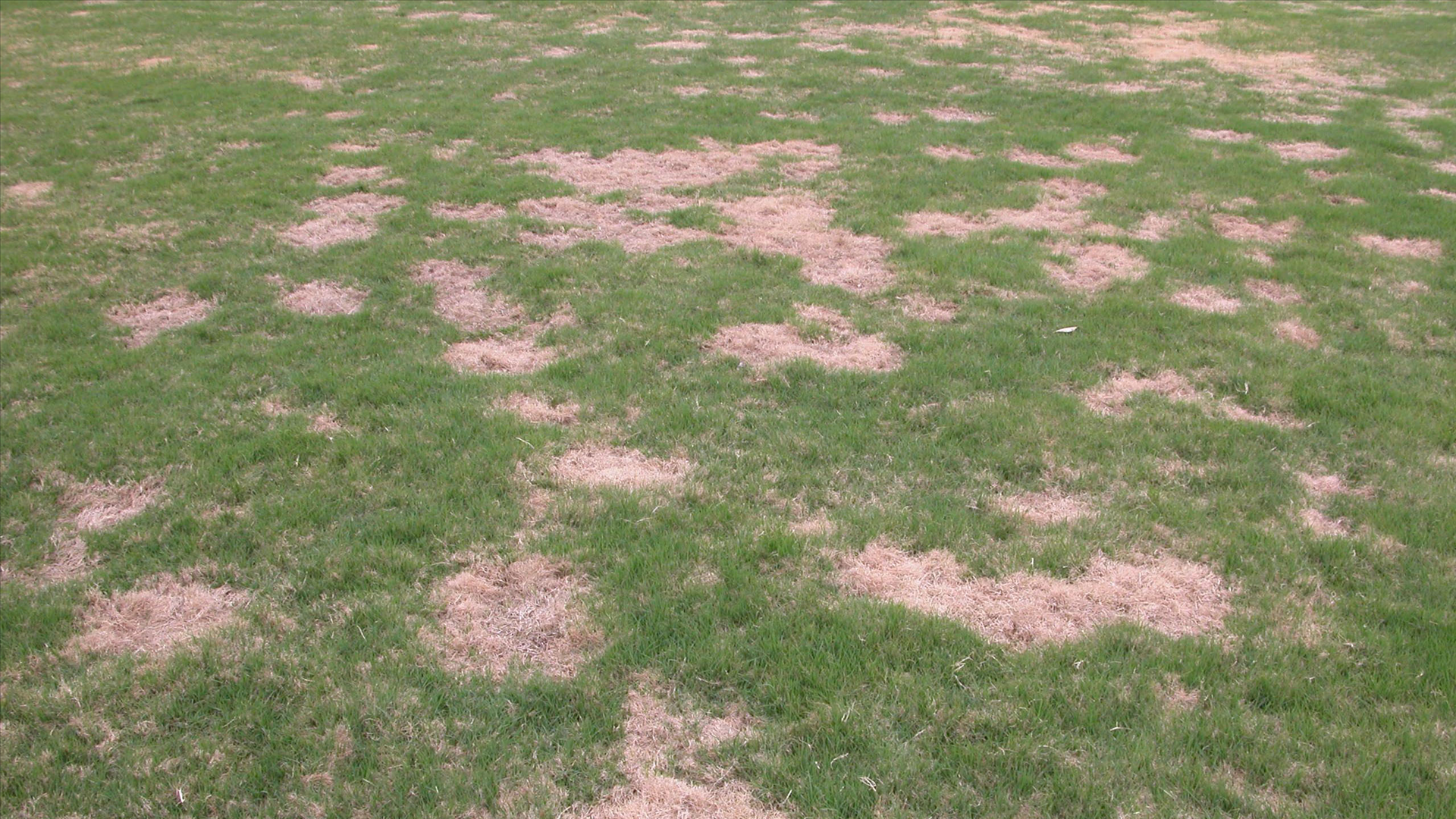Description of Spring Dead Spot (Ophiosphaerella):
Spring dead spot is caused by the fungus called Ophiosphaerella. It occurs in turf that remains dormant in spring in circular patches ranging from 6 inches to several feet in diameter. These patches eventually will die. The roots, stolons, and rhizomes will all be rotten in the affected areas.
CertainLabel™
Spring Dead Spot Optimized Control Options Finder
Legend:
Control
Suppression
No Control
According to the manufacturer approved labels: The following 4 fungicides, applied at the listed application rates, will control Spring Dead Spot.
Broadcast Treatment
per
Label Rate:
2 - 4 lbs per 1,000 sqft
Cost Effectiveness:
Covers 2500 - 5000 square feet
at a cost of
$3.89 - $7.79 per 1,000 sqft
at a cost of
$3.89 - $7.79 per 1,000 sqft
Blanket Treatment
Application Interval:
Spring / Fall
30 days
30 days
per
Label Rate:
4 fluid ounces per 1,000 sqft
Cost Effectiveness:
Covers 8000 square feet
at a cost of
$5.00 per 1,000 sqft
at a cost of
$5.00 per 1,000 sqft
Instructions:
Make 1 to 3 applications. For one application, apply in September or October. For multiple
applications, begin sprays in August
Blanket Treatment
Application Interval:
Summer
14 days
14 days
per
Label Rate:
4 - 6 fluid ounces per 1,000 sqft
Cost Effectiveness:
Covers 5333 - 8000 square feet
at a cost of
$6.44 - $9.67 per 1,000 sqft
at a cost of
$6.44 - $9.67 per 1,000 sqft
Instructions:
Apply 2 treatments at 21 day intervals in late fall to early winter, with the last application made just prior to first permanent snow cover. Rotations and/or tank mix combinations with PCNB can be utilized.
Broadcast Treatment
Application Interval:
14 days
per
Label Rate:
6 - 9 lbs per 1,000 sqft
Cost Effectiveness:
Covers 3333 - 5000 square feet
at a cost of
$14.39 - $21.58 per 1,000 sqft
at a cost of
$14.39 - $21.58 per 1,000 sqft
Instructions:
For prevention, apply in fall before turf has stopped all growth activity. Apply second application in early Spring when soil temperatures reach 55-60°F or when disease first appears. For curative action, apply when disease first appears in early spring and continue at 14 day intervals.

